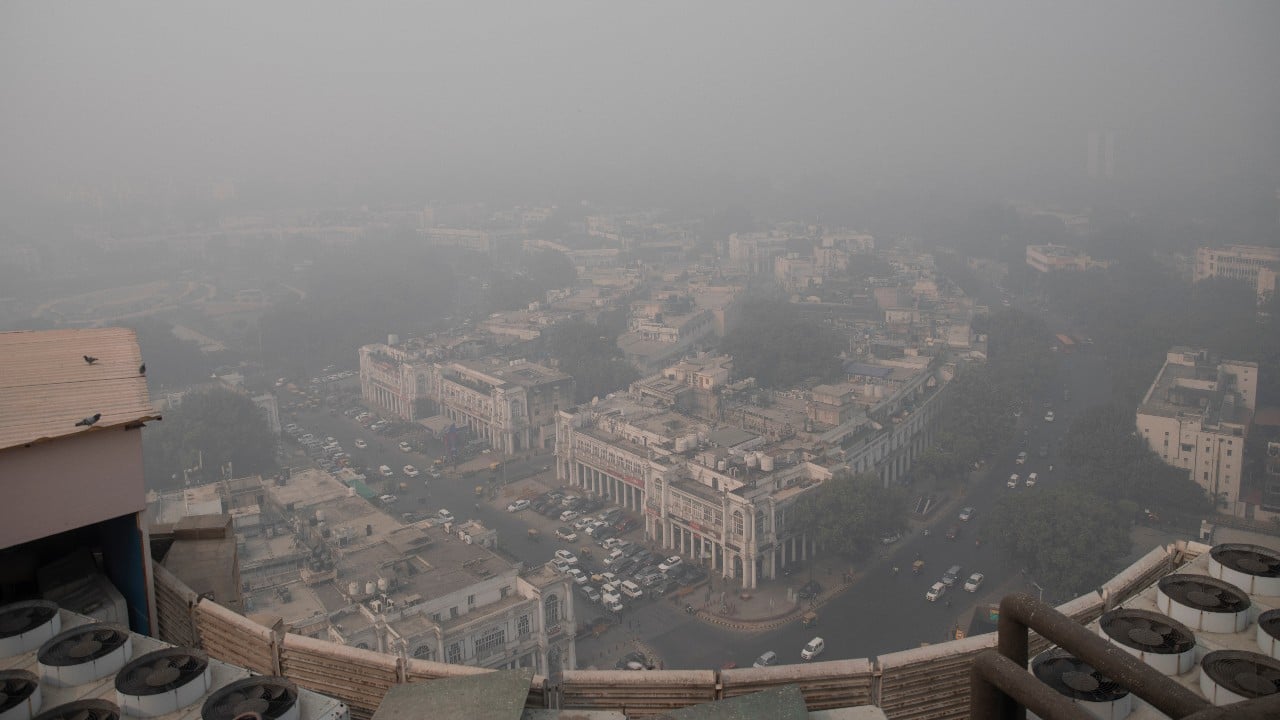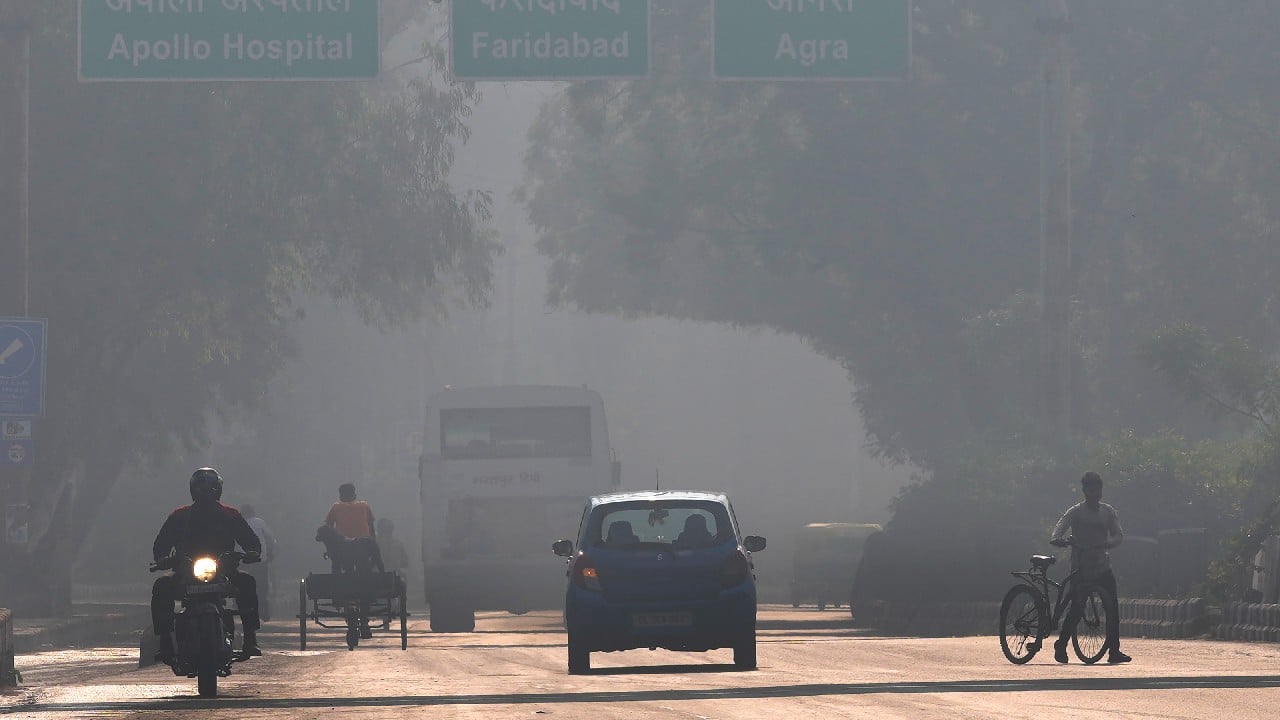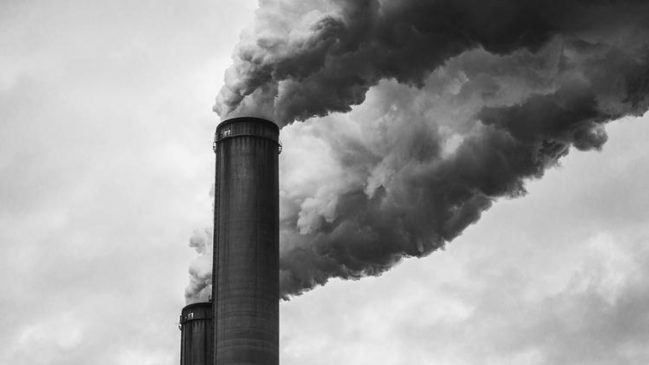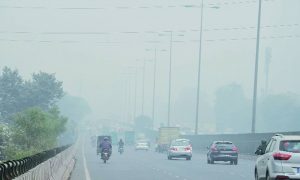Delhi gets all the attention, but the national ambient air quality report shows that pollution is an all-India issue and not just a rural or urban problem.
Every winter, there is a rush to tackle the alarming surge in pollution levels in Delhi-NCR. But pollution is a pan-India problem and not a Delhi-specific issue and calls for a wider, national-level action to get some fresh air across the country, suggest experts and various studies conducted over the years.
A random check of the Air Quality Index (AQI) bulletin at 4pm on December 3 showed poor to severe air quality in different cities across the northern plains. Delhi had ‘very poor’ category air that day with the AQI at 346.
On the same day, the AQI at Bettiah in Bihar was very poor at 387, Bihar Sharif 407, Buxar 427 and Sasaram 394. Cities in Madhya Pradesh fared no better: Damoh had an AQI of 312, Jabalpur 302 and Singrauli 364.
In Uttar Pradesh, Meerut had an AQI of 328, Moradabad 299, Muzaffarnagar 334, Bulandshahr 258 and Hapur 301. Just a week ago, Muzaffarnagar’s AQI stood at 423, making it the most polluted city in UP and the second-most polluted city in the country.
Far away, Kolkata recorded poor air quality (202) and Durgapur 219. In Punjab, Ambala recorded an AQI of 258, Jalandhar 213 and Chandigarh 244. In Haryana, Charkhi Dadri recorded very poor air quality with an AQI of 306, Bahadurgarh 324, Ballabgarh 282, Hisar 370 and Siwan 406.
An AQI of 51-100 is considered satisfactory, 101-200 moderate, 201-300 poor, 301-400 very poor, and anything above 400 severe.
These are just a few places on the radar of the Central Pollution Control Board (CPCB), which has 804 operating stations covering 344 cities and towns in 28 states and six Union territories.
SMALL TOWNS, VILLAGES GO UNDER THE RADAR
Despite this wide network, a vast number of small towns and rural areas across India go unmonitored for air pollution. Many polluted places with favourable weather and wind conditions also do not get due attention. The CPCB is executing a nation-wide programme of ambient air quality monitoring known as the National Air Quality Monitoring Programme (NAMP) in coordination with state pollution control boards.
“Across the country, barring some coastal or high-altitude Himalayan areas, majority (of the) people live in areas that do not meet air quality standards,” said Chandra Bhushan, an environmental expert and the CEO of the International Forum for Environment, Sustainability and Technology. Many rural areas, Bhushan said, do not have air quality monitors but satellite data shows that villages even 100 km or more from Delhi are as polluted. “And it is not a surprise.”
Satellite images of aerosol optical thickness (AOD) for the month of November released by NASA show a thick layer of particles across the northern plains and parts of central India.
Tiny solid and liquid particles suspended in the atmosphere are called aerosols, which include windblown dust, sea salts, volcanic ash, smoke from fires, and pollution from factories.
An air quality report released by Swiss organisation IQAir earlier this year had said 22 of the 30 most polluted cities in the world, including 14 in the top 15, are in India.
The causes of pollution range from stubble burning, vehicular pollution, the burning of biomass, waste and solid fuel, industrial emissions and dust from construction sites, roads and degraded land, brick kilns, transport vehicles, and diesel generators. In winter, the problem gets worse as falling temperatures and moisture in the air trap pollutants and slow wind speeds make their dispersal difficult.
On Friday, after severe criticism from the Supreme Court, the government went into action mode, forming flying squads to conduct surprise checks at 25 sites in NCR. It said five out of the 11 thermal power plants within 300 km of Delhi will remain operational till at least December 15.
Following in Delhi’s footsteps, the Haryana government ordered the closure of schools in Gurgaon, Faridabad, Sonepat and Jhajjar districts, which share borders with the capital. Construction has been banned in 14 NCR districts.
But most of focus is generally limited to air quality in Delhi and nearby NCR areas, leaving other regions unattended and ignored.
Delhi, by the virtue of being the capital, gets all the attention, but a look at the national ambient air quality report shows that pollution is an all-India issue and not just a rural or urban problem, or even an Indo-Gangetic plain phenomenon, explains Bhushan.
According to Bhushan, the problem with NAMP is that it is mostly urban-centric, with most of the funds going to the municipalities and not district authorities.
“One should not forget that many cities are bigger than municipal limits. Thermal plants and other polluting industries located outside municipal boundaries negate all efforts inside cities as bad air knows no boundaries.”

CHOKED BEYOND DELHI’S BORDERS
So while there is strict action on the ground in Delhi and in the nearby cities of Ghaziabad, Gurugram and Noida; a little further down, every possible rule is flouted. Over the past week, this writer travelled through the highways of western UP, Haryana and parts of Uttarakhand for a first-hand experience.
Across the region, black smoke-spewing diesel trucks, old tractors and other vehicles – which are presently not allowed inside Delhi – were a common sight, farm waste was being openly burnt in agricultural fields and black smoke emanated from many brick kilns and other factories.
The thick haze that enveloped Delhi continued past Muzaffarnagar, some 160 km from the capital, and even in parts of Haridwar district of Uttarakhand, 200 km away. Diesel tempos, both old and new, were seen plying in Haridwar, Rishikesh and nearby areas. Though e-rickshaws were also present, the polluting diesel tempos visibly outnumbered the e-ricks.
A local resident said only cycle rickshaws used to ply in old Haridwar earlier but over the years, diesel tempos took over. “We never used to feel this burning sensation in the eyes,” said the resident, who runs a small shop.
Anumita Roychowdhury, executive director in charge of research and advocacy, Centre for Science and Environment (CSE), said the National Clean Air Programme has to urgently move beyond focusing only on a few cities to taking a larger regional approach to air pollution mitigation. “We need to meet the national ambient clean air standards everywhere. Only then it is possible to remove the asymmetry in action and scale up multi-sector strategy across all regions,” she said.

A DEADLY ISSUE
Data published in the Lancet Planetary Health in December 22, 2020, attributed at least 1.7 million deaths in India to air pollution in 2019. Out of this, over 58 per cent deaths were attributed to outdoor air pollution and 36 per cent to household air pollution linked to cooking.
The states of Uttar Pradesh, Maharashtra, Bihar, West Bengal and Rajasthan accounted for over 50 per cent deaths attributed to air pollution in India. UP topped the list with nearly 350,000 deaths (including both outdoor and household pollution) followed by Maharashtra with 139,000 deaths.
The death rate due to household air pollution decreased by 64·2 percent from 1990 to 2019, while that due to ambient particulate matter pollution increased by 115·3 percent, the study said.
Lost output from premature deaths and morbidity attributable to air pollution accounted for economic losses of $28.8 billion (Rs 2.1 lakh crore) and $8 billion (Rs 59,120 crore), respectively, in India in 2019. The combined loss of $36.8 billion (Rs 2.7 lakh crore) was 1·36% of India’s gross domestic product (GDP).
The economic loss as a proportion of the state GDP was highest in the low per-capita GDP states of UP, Bihar, Rajasthan, MP, and Chhattisgarh. Delhi had the highest per-capita economic loss due to air pollution, followed by Haryana in 2019, the Lancet study said.
Household air pollution is caused mainly by the use of solid fuels for cooking such as wood, dung, agricultural residue, coal and charcoal – common in rural areas. Ground-level ambient ozone is produced when pollutants emitted from vehicles, power plants, factories, and other sources react in the presence of sunlight with hydrocarbons emitted from diverse sources, the study said.
IN THE NORTHEAST
It is not just the Indo-Gangetic plains that are plagued by this perennial problem. Pollution has reared its ugly head even in ecologically fragile regions such as the north-eastern states and Jammu and Kashmir, presumed to be clean air hot spots.
Coal and limestone mining, the cement industry and the transport sector that consists of old, polluted trucks often discarded from Delhi-NCR and other diesel buses and vehicles are some of the key polluting factors in Assam and Meghalaya, an expert said.
A Meghalaya State Pollution Control Board report published in 1997 had pointed to environmental damage caused by coal mining in the Jaintia Hills.
Another study titled ‘Mining-affected areas and its impact on livelihood’, published by the North East Hill University (NEHU), Shillong, in 2019, highlighted the adverse effects of mining. “Mining involves activities such as drilling, blasting, hauling, loading and transportation. All these activities are major sources of gaseous and particulate air pollution, the study said.
Some cement plants set up coal-based thermal power plants for generation of electricity. Coal contains high concentration of sulphur, a major source of sulphur dioxide in the atmosphere, the NEHU study, published by indiawaterportal.org, and seen by this writer, said.
Localities near limestone mining areas and cement plants experience thick dust on vegetation, buildings and roof tops, especially in the dry season. Dust on vegetation can affect agricultural and horticultural productivity, it said.
Along the Assam-Meghalaya border, about 15 km from Assam’s capital city Guwahati, is the busy town of Byrnihat, a major hub of polluting industries using dirty fuels, brick kilns and old trucks.
Part of the town, which is in CPCB’s list of non-attainment zones in terms of air quality, is in Assam and part in Meghalaya. Both the Assam and Meghalaya governments have prepared action plans to check pollution in the area but little action is happening on the ground as seen by this writer.
A busy highway that passes through Guwahati’s outskirts and leads to Byrnihat is a major transporters’ hub. All the time lined up with hundreds of trucks that deliver goods to various states of Northeast India, the highway is a major trigger of air pollution as well.
Separate studies by the Desert Research Institute, Nevada, US, and by IIT Guwahati have shown the presence of alarming levels of black carbon in Guwahati, attributed to the high number of unchecked diesel vehicles in the city and its surrounding areas, plying without pollution clearance.
The CSE had in 2013 estimated that 68 per cent of all cities monitored for air pollution in the Northeast region have particulate matter levels higher than the safe standards.
Apart from these factors, waste management, an important aspect of curbing air and water pollution, is essentially non-existent in north-east India, explained Chintan Sheth, an independent geographer and naturalist who has worked in the Northeast. He advocated for a policy in this regard at all levels in cities, towns and villages.
“Unless solid and water waste is properly managed, air and water will continue to be polluted. We can forget about any other kind of policy being enforced by industries. There is not enough education across the region on waste because polluting waste was never an issue culturally,” Sheth said.
In Assam, 37,350 deaths were attributed to air pollution, the Lancet study said. Of this, 20,321 deaths were due to household air pollution and 14,535 due to ambient particulate matter. Ambient ozone pollution accounted for 2,494 deaths. In Meghalaya, 1,034 deaths were due to household air pollution and 757 due to ambient particulate matter.

FOUL AIR IN PARADISE
Far away from the North-East, in Kashmir, pollution is an emerging problem. A study conducted by scientists from Indian Institute of Tropical Meteorology Pune and University of Kashmir in 2018 found that pollution in Srinagar assumes alarming proportions in winter, with the air carrying five times more tiny particulate matter than the permissible limit.
Cold temperatures with dry conditions coupled with high domestic biofuel emissions were responsible for particulate pollution. As temperatures drop, people switch to using bio-fuels for household chores and other activities, the report said.
Another report by Mongabay-India, a non-profit environment and conservation news platform, found that brick kilns functioning without environmental clearances and licences in many districts in Jammu and Kashmir contribute to air pollution and cause degradation of agricultural land.
“Air pollution is a new and emerging cause of concern for us in Jammu and Kashmir. We need more in-depth research and data to back our concerns. We are in touch with experts,” said an environmental activist based in Kashmir.
SOUTH NOT SAFE EITHER
The situation is not rosy down south either, according to the CSE, which analysed post-lockdown air pollution in 21 cities in Karnataka, Tamil Nadu, Andhra Pradesh, Telangana and Kerala early this year.
Even though atmospheric conditions during winter in the south are not the same as those in the Indo-Gangetic plains, trapping of winter pollution is quite high – especially in the inland cities, CSE said, adding that it leaves no room for complacency about relatively lower levels in these states compared to north.
The CSE found that the air gets more toxic with the onset of winter in these cities, with the share of the tinier PM2.5 particles increasing. While several big cities witnessed a reduction in annual trends in PM2.5, smaller towns and cities saw an increase, reflecting the trend in local and regional build-up of pollution, the study said.
“This analysis has dispelled the myth about safer air in the south compared to other regions. Health impacts are nearly equally bad… This demands quicker regional reforms to curb pollution from vehicles, industry, power plants and waste burning to further bend the air pollution curve on a regional scale. This demands speed and scale of action.” Roychowdhury said.
The Lancet data attributed 89,184 deaths in Karnataka to air pollution in 2019, 84,587 in Tamil Nadu and 62,808 in Andhra Pradesh.Roychowdhury said a strategy for clean fuel and technologies, public transport and mobility transition, and waste management needs to be implemented with equal stringency, accountability and compliance monitoring across the Indo-Gangetic plains and other regions. “This will also require strong funding support at the Central and state level to enable this change,” she said.





































